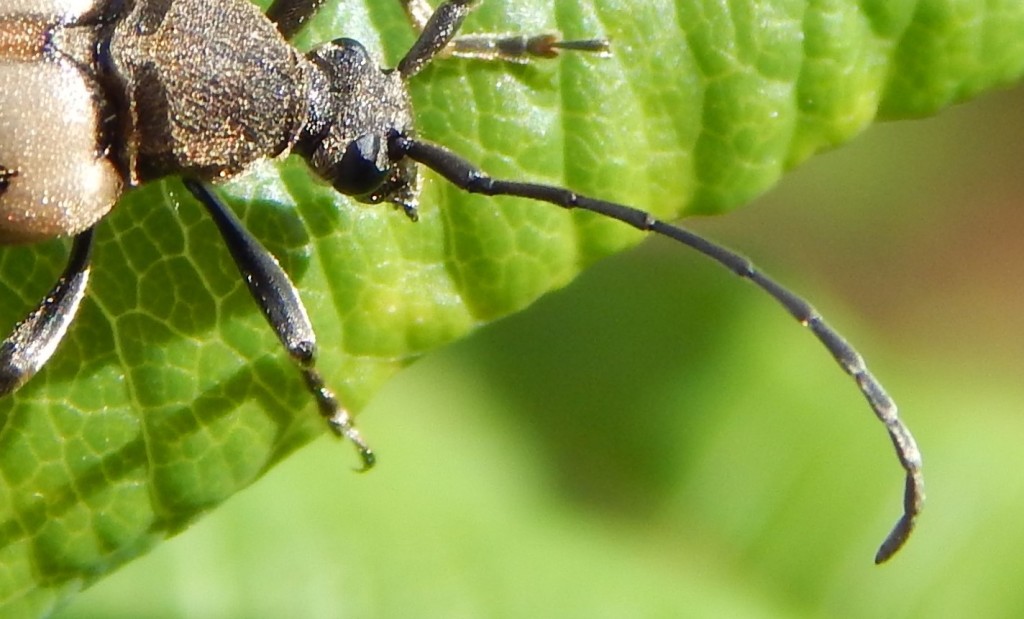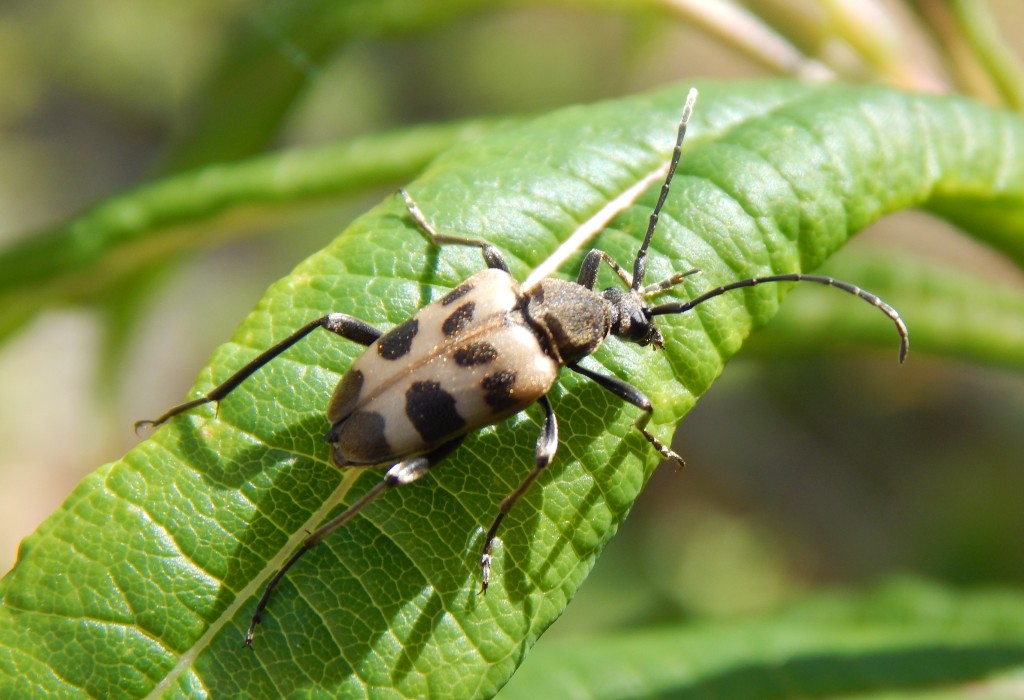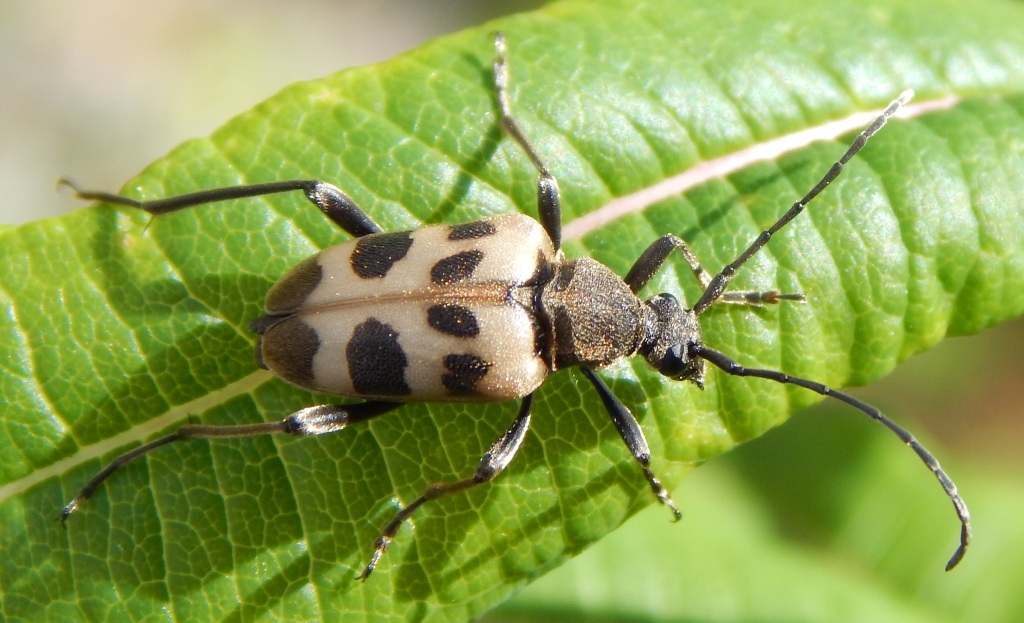
[188] Judolia cerambyciformis or Pachytodes cerambyciformis
Introduction
Judolia cerambyciformis or Pachytodes cerambyciformis is a species of long-horned beetle, with no common name.
The general opinion in the UK is that now Judolia and Pachytodes are distinct genera. They used to be all in the genus Judolia.
Taxonomy
Kingdom – Animals
Phylum – Arthropods
Class – Insects
Order – Coleoptera (Beetles)
Suborder – Polyphaga
Infraorder – Cucujiformia (Most plant eating beetles)
Clade – Phytophaga (Cerambycoidae and Weevils)
Superfamily – Cerambycoidea (Cerambycidae, Flower Beetles and a few others)
Family – Cerambycidae (Long-horned Beetles)
Subfamily – Lepturinae (Flower Longhorns)
Tribe – Lepturini
Genus – Pachytodes
Scientific Name – Pachytodes cerambyciformis
Synonyms include Judolia cerambyciformis and Leptura cerambyciformis
Name
Like many beetles this species does not have a common name. When insects are called long-horned it generally means that the antennae are relatively long.
In Ancient Greek mythology the shepherd Cerambus was transformed into a large beetle with horns. He has given his name to the type species Cerambyx and hence to the whole family of long-horned beetles. That make cerambyciformis a particularly meaningless species epithet here. I can’t trace either judolia or pachytodes.
Description
There are about 30 000 species in the family Cerambycidae. Almost all have very long antennae, longer than the rest of the body.
Pachytodes cerambyciformis is a medium sized beetle, about a centimetre long with antennae slightly longer than the body. The elytra are light brown with black marking and the rest of the body is all black.


Larvae of this beetle feed on the roots of many species of deciduous and coniferous trees, including [266] Norway Spruce, [069] Chestnut and Goat Willow. They pupate underground and in summer the adults can be found on flowers.
Habitat
Pachytodes cerambyciformis is found in most of Europe and is very common in Central Europe.
Other Notes
Sorry, it’s too late in the process for me to file this one under Pachytodes.
See also
There is another long-horned beetle coming soon – [203] Leptura quadrifasciata.
